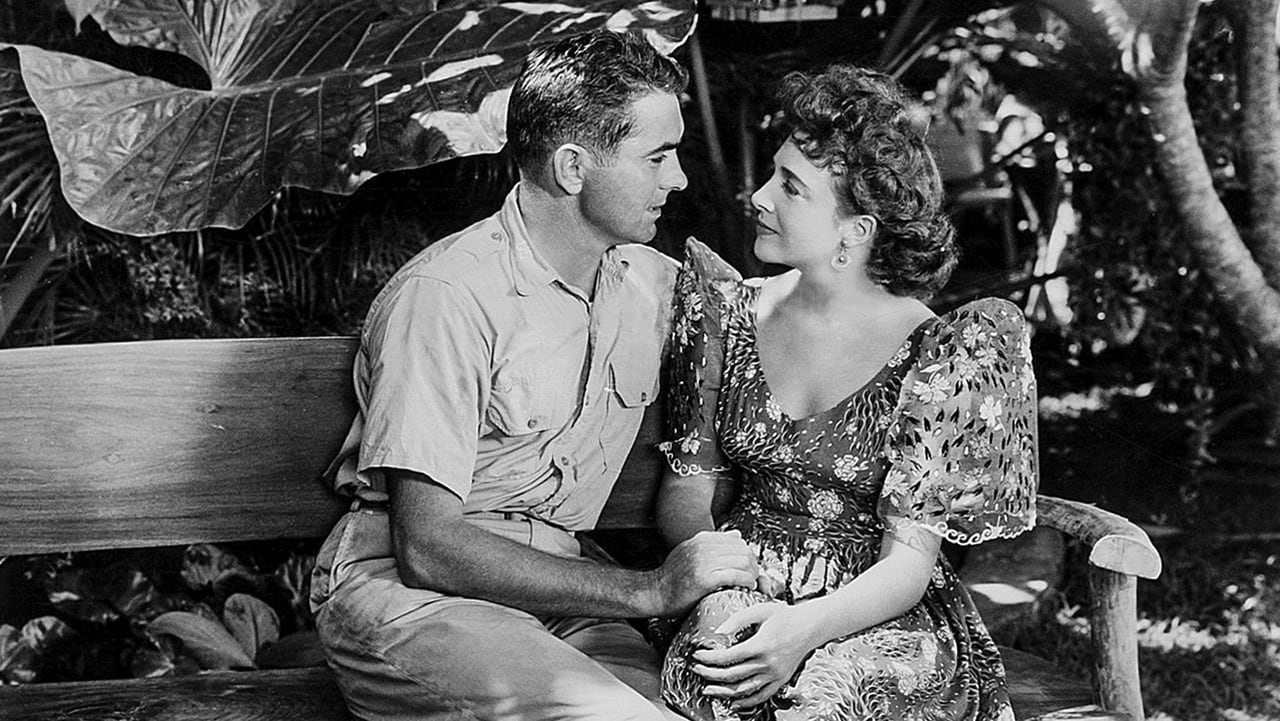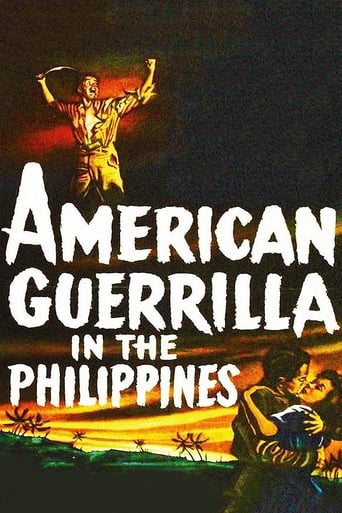



Overrated and overhyped
brilliant actors, brilliant editing
A Brilliant Conflict
Go in cold, and you're likely to emerge with your blood boiling. This has to be seen to be believed.
View MoreFilmed entirely on location in the Philippines with (as a Foreword is careful to point out) the co-operation of the Philippines Government and its armed forces (many of the leaders of which took an active part in the war-time guerrilla movement), American Guerrilla in the Philippines may have been a bit of a trail-blazer in its time but, seen today, it is not much different from many other films dealing with these events, such as No Man Is An Island. This one, however, has been lensed on a lavish scale, although - aside from its shoot-out climax - the action scenes are not all that spectacular. All the same, Lang's pre-occupation with violence is evident in many scenes (the killing of Anzures, the Japanese interrogation of Torena and Miss Presle, the Japanese commander shooting a peasant who offers him a pack of American cigarettes) and his cynicism also comes to the fore in such episodes as the scene with Carleton Young as a nonchalant officer or the sequence in which Jack Elam and his confederates plunder the natives. In other respects, Lang's direction is capable, although camera movement and frame composition are not particularly imaginative aside from some isolated shots (the boat nearly capsizing with Power at the tiller, the Japanese soldier advancing almost into the lens of the camera before being shot back). The playing is little more than adequate, but it's interesting to see Tom Ewell, who is high up in the billing here in his second attempt at a Hollywood career (the two Willie and Joe films plus Abbott and Costello Lost in Alaska followed, after which he dropped out of sight again until his triumphant return a few years later in The Seven Year Itch). Actually, Ewell is comparatively subdued, as his part here calls for naturalistic comedy rather than exaggerated slapstick - the former certainly tones in better with the over-all mood of the film. In her first color movie (and what was to be her second last English-language role), Micheline Presle looks very glamorous. Robert Barrat appears briefly in his accustomed part of General MacArthur. Power is his usual self. Some of the indigenous players, particularly Miguel Anzures and the unidentified actor who plays the Japanese commander, are very effective. I am glad that Lang has the Japanese soldiers speak Japanese instead of fractured English (Hollywood's usual device in these circumstances). The film was an unusual assignment for writer-producer Lamar Trotti, but he has brought off both the screenplay and its production with his usual capability. Though the plot is to some extent stereotyped (a fault that occurs in the original novel and has unfortunately become more obvious due to the large number of imitations the film has inspired), at least the dialogue avoids many of the usual Hollywood cliches (having the Japanese dialogue untranslated is an advantage here). The film has been realized on an extensive budget. Both production credits and production values are first class.
View MoreEven as a non-movie war buff, I really enjoyed this movie. As a Filipino who lived in the Philippines for 16 years, 6 of which was in the province and the rest in the States, I really identify with the movie. It shows the beautiful scenery of the country and the rustic huts which are still being used to this day. It displays the villager life quite authentically as I recognized the national costume, (barong Tagalog and filipiniana), a typical nipa hut, the way people typically wash their clothes, and the huts on stilts.Tyrone Powell stars as the dashing war hero who gets blown off his PT boat and leads his motley crew to Australia. In the process, he gets caught up with the Filipino guerilla movement against the Japanese, trying to duck the Japanese whenever the village is invaded. It is an interesting portrayal of trying to make do with Asian countryside resources to make a viable radio to contact general MacArthurs troops. He meets the heroine who later becomes widowed and the two fall in love in the midst of the war. The ragtag crew gets caught in a last stand at a sturdy church, when General MacArthur arrives in the nick of time, making for a feel good movie, I found it exciting, easy to get into and located in a typical local Filipino flavor even featuring the typical native dance tinikling. I loved this movie, it will not disappoint. Maybe they could have portrayed the Japanese high rankers as a little bit more cruel, the way my mom used to describe to me, and they could have shown some Japanese as young kids who had no choice and were just homesick and were in a war they never wanted to be in. But other than that, an excellent war movie. The difference between movies in the 1950's and 2000's clearly show in terms of excellent acting and inspiring cinematography.
View MoreIf anyone thinks they've seen this film before, An American Guerrilla in the Philippines bears no small resemblance to the John Wayne film Back to Bataan. But what a difference in terms of production.Back to Bataan was done on the RKO back-lot with their official jungle set used for films going back to King Kong and The Most Dangerous Game. An American Guerrilla in the Philippines was shot entirely on location in the Phillipines and the cinematography is beautiful.I'm not sure that Tyrone Power's military service brought him to the Philippines, but he did serve in the Marines in the Pacific Theater in several campaigns against many islands. It certainly lent a lot of credibility to his performance.Unlike John Wayne who is ordered into the hills to begin organizing resistance, Power is a navy ensign who's just trying to escape the Philippines after Bataan has fallen and to avoid the brutal Japanese prison camps. Along the way Power decides along with Tom Ewell and others in his motley group to join the resistance.And unlike John Wayne, Power gets an opportunity for a little romance with a plantation widow, Michelline Presle. Power does a good job here. The film is not a dark and moody Fritz Lang type product, but Lang does all right with a project that he obviously took for a pay check. I will say this though the ending is a bit too much to swallow as Douglas MacArthur does indeed return, and in the nick of time as well.
View MoreI caught this movie on the Fox Movie Channel last week. A shame that the DVD is not available as this one would be a keeper. If you like WWII era movies this one is a good one. It documents insurgency activity against the Japanese during the war. A rag-tag group of people including some Americans separated from the rest of their detachment lead locals in a courageous and sometimes complex scheme to keep the enemy unaware of their activities.This was an easy movie to get into and one I would add to my collection if available. It is in color as well and features some spectacular shots.
View More